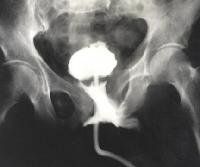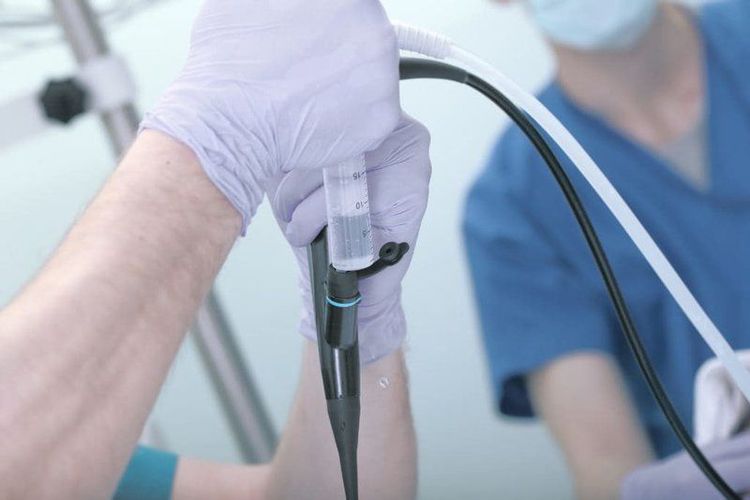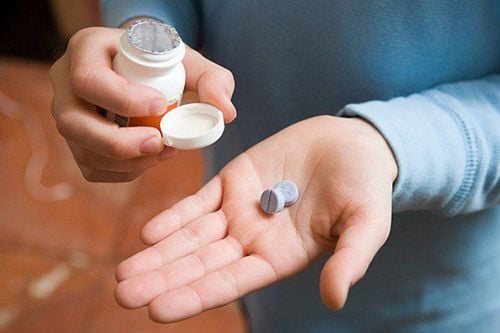This is an automatically translated article.
The article is professionally consulted by Master, Doctor Lam Thi Kim Chi - Department of Diagnostic Imaging - Vinmec International General Hospital Da Nang.The method of retrograde urethrography is currently a modern method with high value for the diagnosis and treatment of diseases related to the urethra, ensuring male physiology works well.
1. What is retrograde urethrography?
Retrograde urethrography is an imaging method, based on the obtained dimensional images, we investigate the morphology and urinary function of the male lower urinary tract.
The principle of this method is to use water-soluble iodinated contrast agent through the device inserted into the urethra. Because contrast agents are inserted into the urethra in the opposite direction to the urine, they are called retrograde urethrography.

Chụp niệu đạo bàng quang ngược dòng là phương pháp chẩn đoán bằng hình ảnh
2. Indications and contraindications of retrograde urethrography
The retrograde urethrograph is indicated and contraindicated in the following cases:
Indicated for the following subjects:
Diagnosis of abnormal conditions of the bladder and male urethra . Urine function of bladder and urethra. Diverticulosis, tumor, tuberculosis, bladder rupture, neurogenic bladder. Problems such as strictures, diverticula, urethral fistula. The phenomenon of vesicoureteral reflux. Look for the cause of repeated urinary tract infections Look for bladder or urethral trauma Find the cause of urinary incontinence Check for prostate enlargement or urethral stricture in men Contraindicated for Subject:
Patients with urinary tract infections absolutely do not use this method. If an infection is suspected, a urinalysis should be done to confirm this.
Prepare the patient
The patient should tell the doctor if: - Are or may be pregnant
- Have symptoms of a urinary tract infection: pain, burning when urinating...
- Are allergic to contrast medicine, other medicines or ever had a serious allergic reaction (after a bee sting, eating shellfish...)
- Have an IUD in place
- In the 4 days before Have had an X-ray examination with a contrast agent or have taken a medication containing Bismuth.
When performing for children, it is necessary to prepare children mentally, reduce fear, help children cooperate well Can be asked to submit a consent form after being clearly explained the benefits and risks Patient feeling during the scan
- You will feel the urge to urinate several times during the procedure. Somewhat uncomfortable getting the catheter in place.
- There is a feeling of fullness in the bladder and the urge to urinate when contrast is injected. The patient may feel pain afterward.
- Patients are often embarrassed to urinate in front of others. Encourage the patient to understand that this is a common reflex during the scan
- You may feel a burning sensation when urinating
3. Steps to perform retrograde urethrography
Unprepared urinary tract film is taken immediately after the patient urinates. Accordingly, the sequence of actions during retrograde urethrography is as follows:
Straighten tube
Carefully disinfect the patient's stoma with sterile tools, such as surgical cotton gloves Expel air bubbles from catheters and instruments. The doctor adjusts the patient's lying position. The rubber balloon portion of the catheter is inserted into the anterior urethral opening, approximately 2 to 3 cm from the boat fossa. Inflate the latex balloon with physiological saline (use 2 to 3ml). Inject slowly and gently while monitoring patient response. Or you can use the tool attached directly to the syringe to put it into the hole to seal. Contrast pump
Contrast can be given or injected directly with a syringe, while pumping and gently pulling the urethra. During the pumping process, always monitor under the magnifying screen, when the patient feels a lot of pain, stop the injection immediately. Pump from the beginning 60 to 100ml of contrast agent. A spasm of the posterior urethral sphincter may occur. If so, the doctor should ask the patient to breathe deeply or try urinating. Perform imaging immediately during pumping, ask the patient to hold their breath. Take straight and oblique films. Cystography
Take when the bladder is full when the patient feels the need to urinate. The bladder can be filled by giving the patient water to drink or adding physiological saline (about 200ml is enough). Take a straight film with a film size of 30x40cm to get all the images of the bladder and kidneys to look for reflux. Perform oblique and slant film shooting. Take photos while urinating
Take pictures when the patient is standing, take both the film behind the right or behind the left. Place the patient's penis horizontally, let the X-ray shine horizontally or 100 degrees, the area is located between the navel and the pubic joint. Take a slant and at least 2 films to visualize the entire urethra, stoma, and urine stream. Take photos after urinating
After the patient urinates, take pictures with a straight position, the size of the film is 30x40cm. In addition, when performing the scan, urinating in male patients can be done in the lying position. The patient can self-inject contrast for urethrography by holding the Foley catheter inserted into the urethra with an adhesive bandage. The patient lies on his side and injects the contrast agent into his urethra. Need to pump slowly and can self-regulate pump pressure. However, this method only applies to patients with good cooperation because it increases the probability of success and reduces the risk of complications due to improper pump pressure.

Chụp niệu đạo bàng quang ngược dòng sử dụng thuốc đối quang iod tan trong nước qua dụng cụ đưa bơm vào niệu đạo
4. Evaluation of results after retrograde urethrography
The bladder is regular, the bladder bottom is close to the upper border of the pubic joint, urine flows normally from the bladder. Examination of the diameter and border of the urethra, the urethra in men has 4 segments: the prostatic segment, the membranous segment, and the urethral segment. onions and caves. There was no passive and active vesicoureteral reflux. There was no prolapse of the bladder neck during urination. No residual urine
5. Complications and treatment of complications during retrograde urethrography
Not showing fullness of the urethra due to urethral sphincter spasm as mentioned above to correct this by telling the patient to breathe deeply or urinate. Injury to the mucosa causes regurgitation of the contrast agent into the vein, but it is of little importance. Urethral bleeding is a possible symptom, the doctor should warn the patient in advance to avoid panic. As long as the patient rests, the bleeding will stop. Infection is a dangerous complication that can occur even with careful disinfection. It is necessary to treat with antibiotics before and after the scan. Master Doctor Lam Thi Kim Chi graduated with a Master's degree in Radiology - Hue University of Medicine and Pharmacy and has over 6 years of experience as a radiologist. Doctor Chi used to work at Da Nang Obstetrics and Gynecology Hospital before becoming a radiologist at Vinmec Danang International Hospital as it is today
Urethrography is a technique Medical care is required to be performed by doctors with high diagnostic imaging expertise and with adequate medical facilities. To register for examination and treatment at Vinmec, please go directly to Vinmec health system or register online HERE.
MORE:
Possible problems with bladder catheterization Common bladder diseases What to know about urinary tract infections














